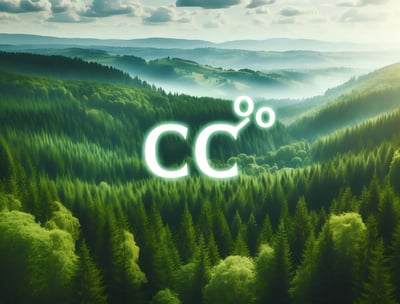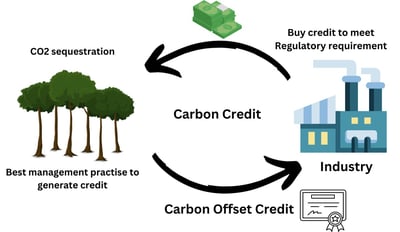From Development
To Certification
To Trading
Paths to decarbonisation: Offsets or Credits?
Carbon offsets and carbon credits are closely related concepts in the context of carbon emissions reduction, but they have distinct meanings:
Carbon Offsets


Definition: Carbon offsets are reductions in greenhouse gas emissions (or increases in carbon storage) that can be used to compensate for emissions produced elsewhere. They are typically measured in metric tons of CO2 equivalent.
Function: When a company or individual purchases a carbon offset, they are essentially funding projects (like reforestation, renewable energy, or energy efficiency) that reduce emissions, thereby offsetting their own carbon footprint.




Carbon Credits
Definition: Carbon credits are specific units representing the right to emit one ton of CO2 or its equivalent in other greenhouse gases. They are often created and regulated under cap-and-trade systems.
Function: Companies that reduce their emissions below a certain cap can sell their excess credits to others that exceed their limits. This creates a market for carbon emissions trading.
Regulation: Carbon credits are often part of regulatory frameworks and can be traded in carbon markets, while carbon offsets are generally voluntary and purchased by companies or individuals looking to reduce their impact.
Origin: Carbon credits come from verified emissions reductions tied to regulatory programs, whereas carbon offsets can be generated from a wide variety of projects, which may or may not be verified.
Market Dynamics: Carbon credits are typically subject to market trading and price fluctuations, while carbon offsets are usually sold at a fixed price based on project type and verification.
Key Differences
While both serve to mitigate climate change, carbon credits are more about compliance and regulatory frameworks, while carbon offsets are often voluntary efforts to balance emissions.
The EU-Emissions Trading Scheme
Each year the EU systematically reduces allocation of EUAs, he supplies of European Union Allowances with the intent of driving up the prices of carbon emission. This strategy bolsters the Commission's commitment to fostering a market environment that encourages sustainable practices and emission reduction strategies. It illustrates Europe's continued support in the market, a remarkable commitment given the context of a land war at the door or Europe, an energy crisis, and sustained inflation.
The EU-ETS carbon pricing mechanism is designed to regulate and reduce greenhouse gas emissions. And it works, at least within its local marketplace. Over the past two decades, it has evolved into a working tool to reduce emissions at scale, operating within an increasingly well-informed and liquid market.
The EU Commission has outlined clear environmental goals for 2030 and 2050. Those include a 55% reduction in greenhouse gas emissions from 1990 levels by 2030. Also, it aims for climate neutrality by 2050 - the amount of greenhouse gasses emitted should be minimized, and any tonne of CO2 emitted should be removed or offset. To achieve these climate objectives, carbon prices are going to have to continue to increase. It is only when faced with high emission prices that industries have a clear incentive to lower emissions.
